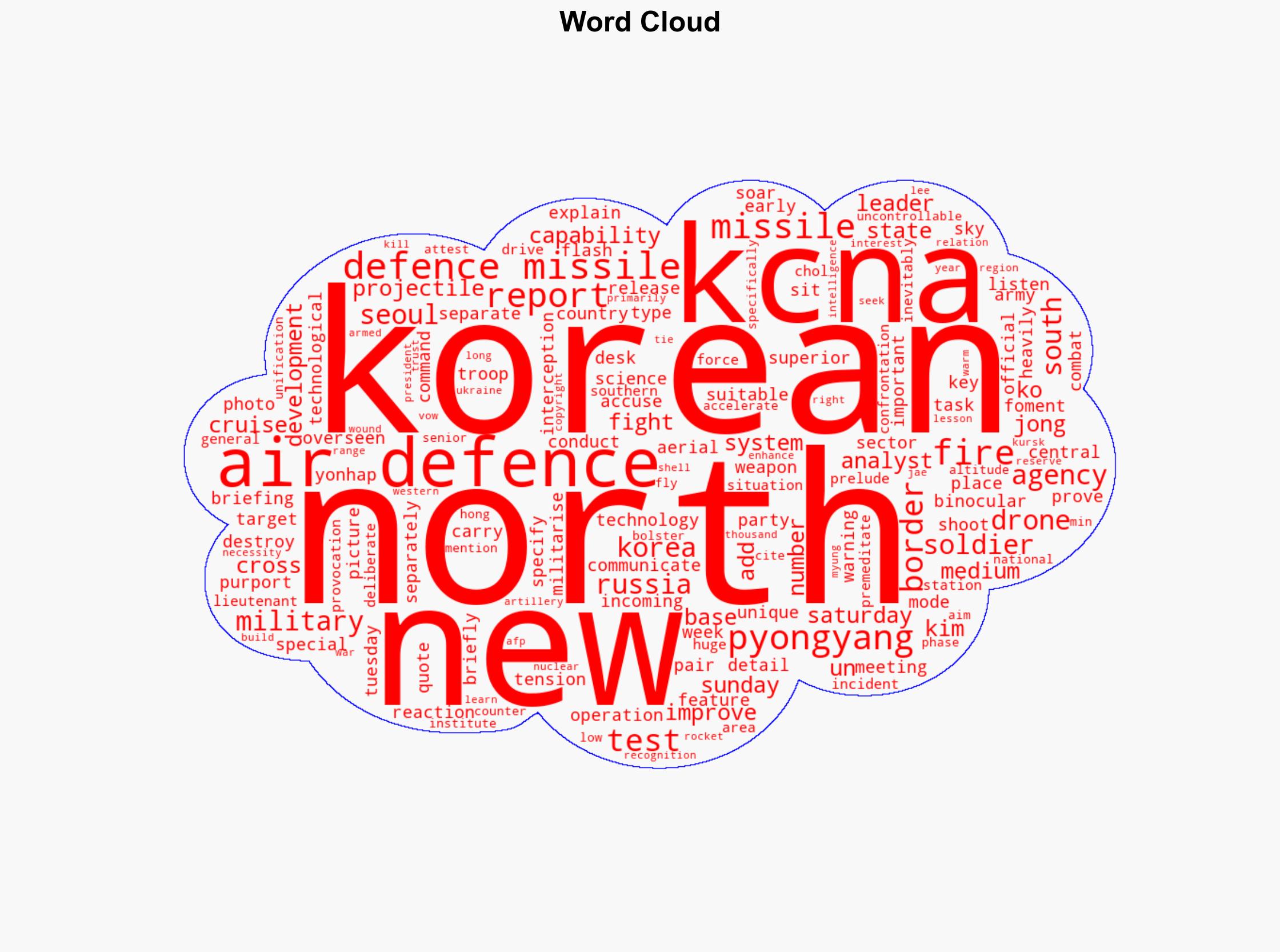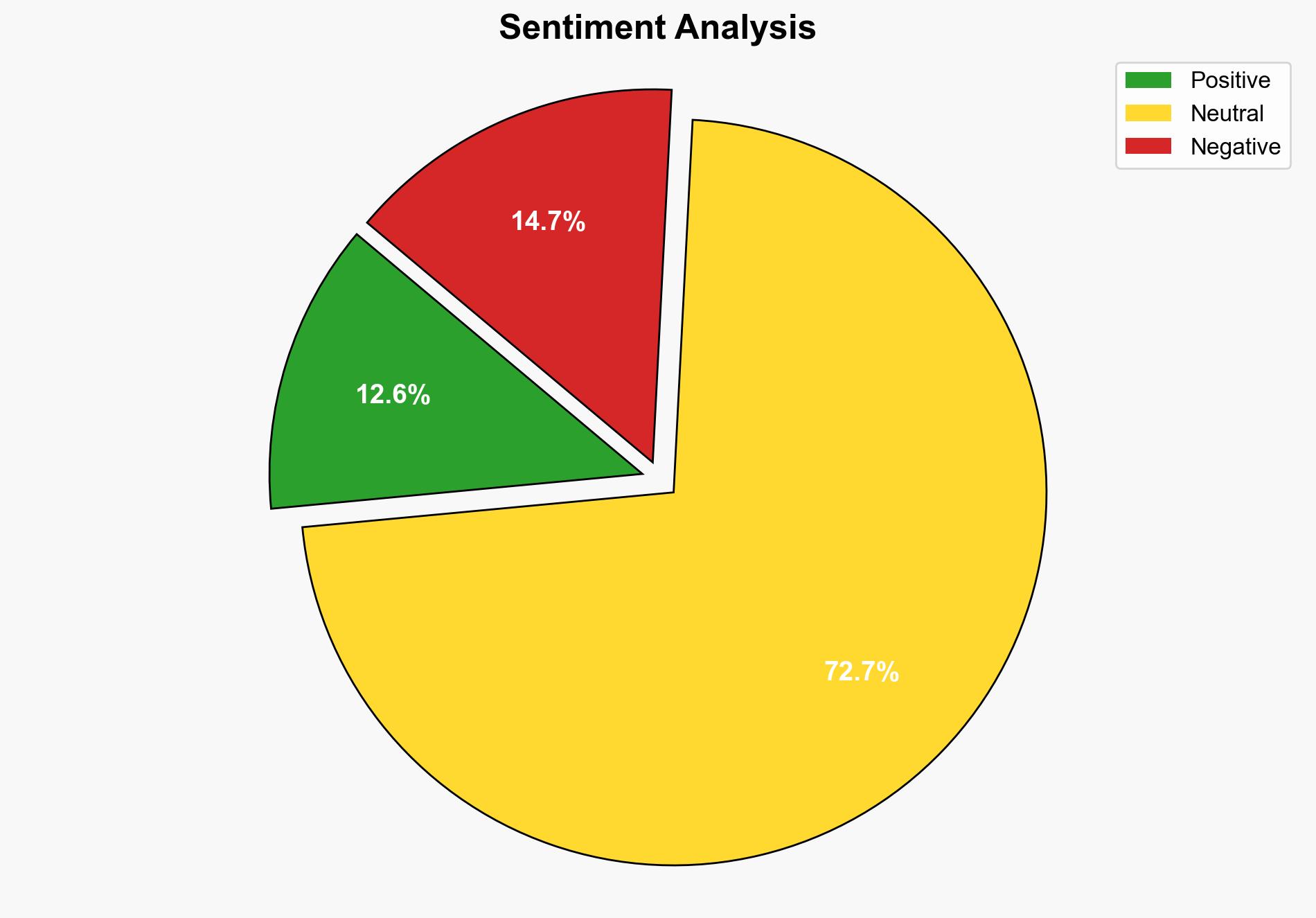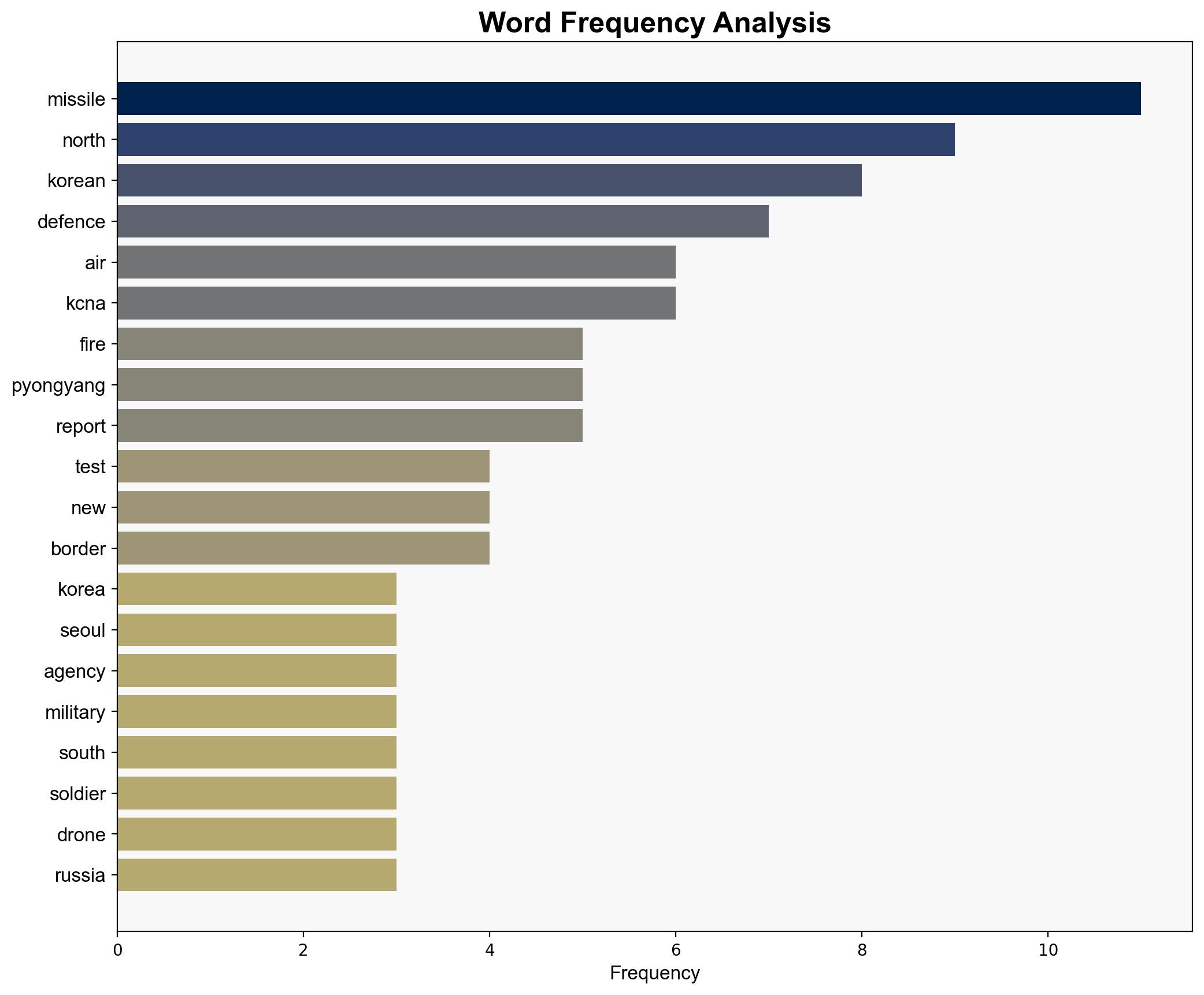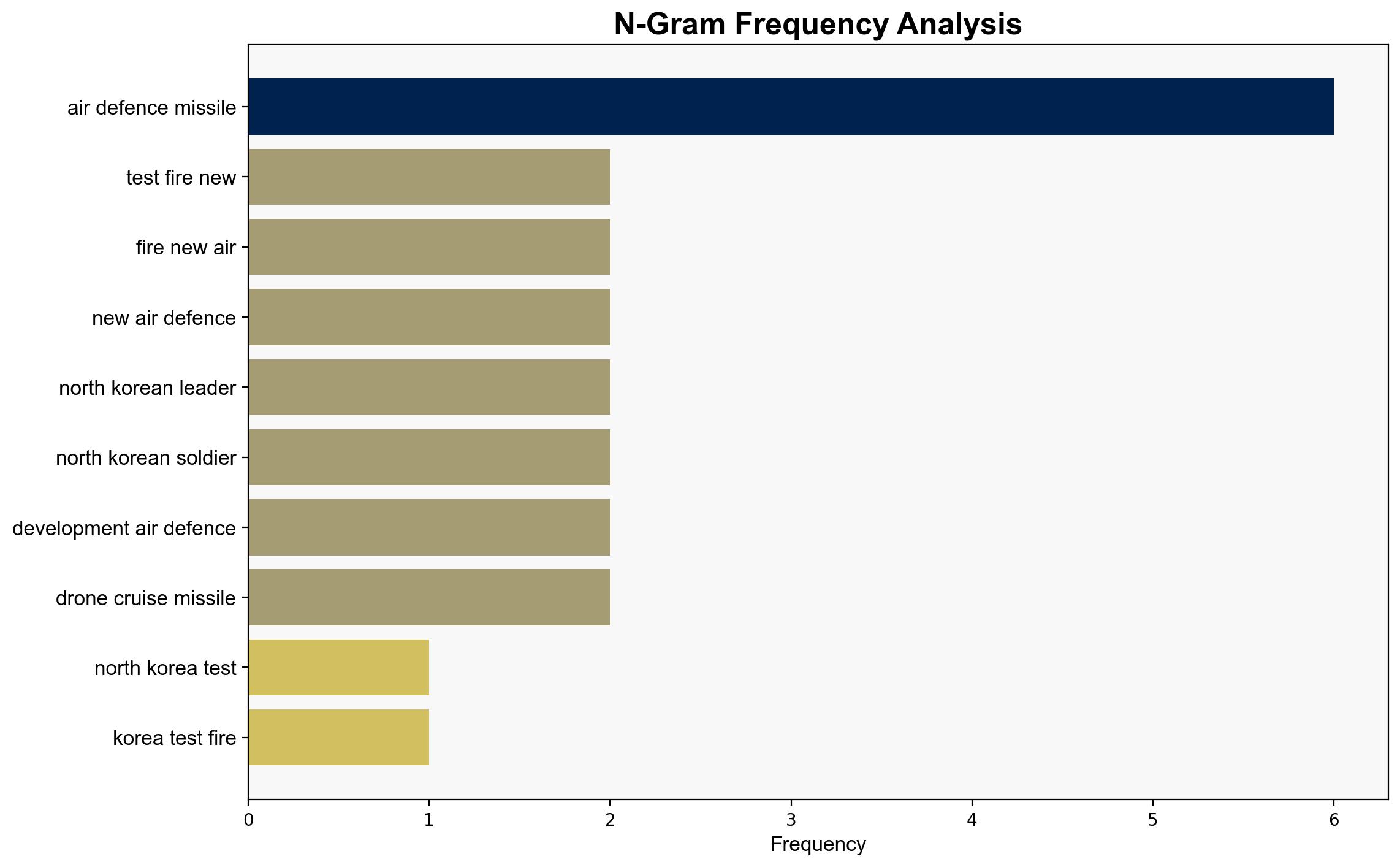North Korea Test-fires Two New Air Defence Missiles KCNA – International Business Times
Published on: 2025-08-24
Intelligence Report: North Korea Test-fires Two New Air Defence Missiles KCNA – International Business Times
1. BLUF (Bottom Line Up Front)
North Korea’s recent test-firing of two new air defense missiles suggests an effort to enhance its military capabilities, possibly in response to perceived threats from South Korea and other regional actors. The most supported hypothesis is that North Korea aims to bolster its air defense systems to counter potential aerial threats, including drones and cruise missiles. Confidence Level: Moderate. Recommended action includes increased surveillance and intelligence-sharing among regional allies to monitor further developments.
2. Competing Hypotheses
1. **Hypothesis A**: North Korea is advancing its air defense capabilities primarily to counter perceived threats from South Korea and to deter aerial incursions.
2. **Hypothesis B**: The missile tests are a demonstration of military strength intended to influence diplomatic negotiations and signal technological progress to domestic and international audiences.
Using the Analysis of Competing Hypotheses (ACH) 2.0, Hypothesis A is better supported by the evidence, including the specific mention of countering drones and cruise missiles, which aligns with recent regional military developments.
3. Key Assumptions and Red Flags
– **Assumptions**: North Korea perceives a genuine threat from South Korea and other regional actors. The technological capabilities of the new missiles are as advanced as claimed.
– **Red Flags**: Potential exaggeration of missile capabilities by North Korean media. Lack of independent verification of the test results.
– **Blind Spots**: Limited information on the actual performance and deployment readiness of the new missile systems.
4. Implications and Strategic Risks
– **Geopolitical Risks**: Increased military tensions on the Korean Peninsula could lead to an arms race or accidental escalation.
– **Economic Risks**: Regional instability may affect economic activities, particularly in South Korea.
– **Psychological Risks**: Heightened fear and uncertainty among civilian populations in the region.
5. Recommendations and Outlook
- Enhance regional intelligence-sharing frameworks to monitor North Korean military developments.
- Engage in diplomatic efforts to reduce tensions and open channels for dialogue.
- Scenario-based projections:
- **Best Case**: Diplomatic engagement leads to de-escalation and potential arms control agreements.
- **Worst Case**: Misinterpretation of military actions leads to conflict escalation.
- **Most Likely**: Continued military posturing without immediate conflict, but increased regional tensions.
6. Key Individuals and Entities
– Kim Jong Un
– Ko Jong Chol
– Lee Jae Myung
7. Thematic Tags
national security threats, regional focus, military escalation, diplomatic negotiations





